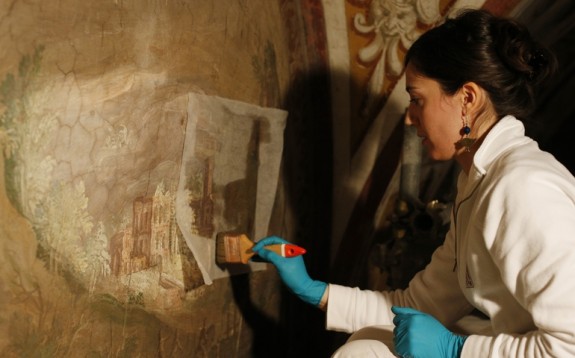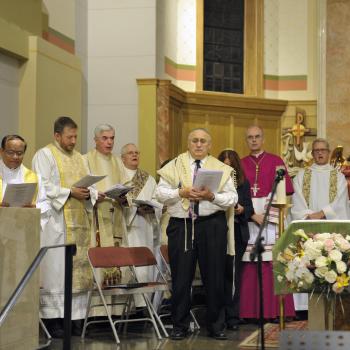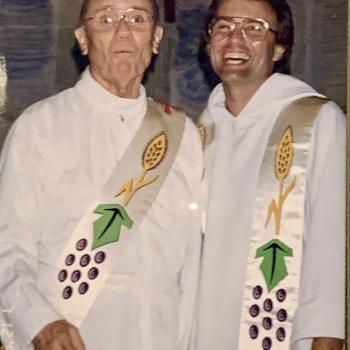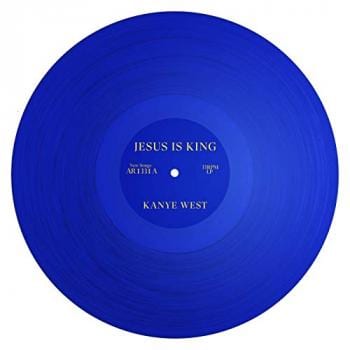Fascinating stuff, from CNS:
A restorer carefully peeled back a thin wet veil of paper from a black sooty wall to see what was hidden underneath.
From behind the layers of grime and dirt emerged the frescoed images of a fallen Roman column, a flock of fluffy sheep and a pink sunset sky over a forgotten ancient city.
The surprise that restorer Chiara Munzi was unveiling was a 16th-century fresco by Flemish master Paul Bril — a rich, colorful landscape scene that hadn’t been seen with such vivid detail for centuries.
Four levels of scaffolding put restorers and visitors within inches of freshly uncovered images of trailing ivy, angels playing lutes, the solemn and wise faces of doctors of the church, and bucolic landscapes.
Bringing blackened or dulled walls and ceilings back to their original “brightness and immediacy transports us right back to the moment they were painted,” Paolo Violini, the Vatican Museums’ top expert in fresco restoration, told Catholic News Service.
A team of nearly a dozen restorers spent nine months just on the chapel’s vaulted ceiling. They are using surgical scalpels, pulses of laser light, de-oxidizing chemicals, thin Japanese paper sprayed with ammonium bicarbonate and soft sea sponges to bring back the original splendor of the medieval sanctuary’s 18,300 square feet of Renaissance frescoes and decorative paintings.
In addition to the frescoed chapels and walls, the pontifical sanctuary houses the Scala Santa, or Holy Stairs.
According to tradition, the Holy Stairs are the ones Jesus climbed when Pontius Pilate brought him before the crowd and handed him over to be crucified. It’s said that Constantine’s mother, St. Helen, brought the stairs to Rome from Jerusalem in 326 A.D.
Read more. And check out this terrific video by Robert Duncan describing the project.












